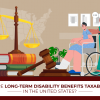
Are you planning to know what to do and what not to do in pain and suffering settlement cases? Well, trust me, you are not alone in this fight!
I have seen people lacking the necessary knowledge in such cases. And guess what? Most people do not even document their emotional distress because they think that it won’t matter in a legal battle when they ask for their rightful compensation!
However, there’s a twist!
Did you know that failing to document your pain and suffering could slash the value of your injury claim by thousands? Many victims focus only on medical bills, but emotional and physical distress can be just as critical, especially under the Baton Rouge personal injury laws.
Louisiana follows comparative fault rules, meaning your compensation may be reduced if you’re found partially at fault.
However, proving the full extent of your damages requires thorough documentation. A skilled accident attorney in Baton Rouge can help ensure no detail is overlooked, from daily pain levels to missed life events.
Hi. In today’s blog, I will tell you why, without proper evidence, insurance companies may downplay your suffering. So, if you want to know that, keep reading till the end, and thank me later…
Understanding Pain And Suffering In A Personal Injury Claim
Pain and suffering are not limited to the bruises, broken bones, or surgeries they represent. They are also about some of the things that typically follow a serious car accident case, like:
- Emotional anguish.
- Psychological distress.
- Decreased quality of life.
These types of damage are the ones that the law of Louisiana, like most other jurisdictions, refers to as non-economic damages.
According to Louisiana Civil Code Article 2315, a person who, through his fault, causes injury to another is bound to make compensation for the damage, both here and hereafter, which is the result of the injury to the body or mind.
On the other hand, pain and suffering do not have to be accompanied by receipts, unlike medical bills or wages.
Hence, capturing and describing these experiences are of utmost importance to anyone filing a personal injury claim.
What Counts As Pain And Suffering?
Pain and suffering is the main reason for a wide spectrum of physical and emotional effects that could be caused by it.
The most common examples include the following:
- Continuous physical pain or discomfort
- Anxiety, Depression, or PTSD
- Being deprived of performing sports or participating in social events
- Sleep problems or bad dreams
- Changed relationships or emotional isolation
- Getting embarrassed because of permanent scarring or disability
These consequences are extremely different for each person. That is the reason why it’s necessary to document these effects in a personalized way.
Why Documentation Matters In Louisiana Injury Claims
The judges and the juries that have to decide on intangible losses in Baton Rouge have to do this with only a few pieces of information. Your detailed records show them who you truly are and what you feel/who you have become.
They cannot easily accept emotional claims, which lack concrete evidence. If you cannot prove your injuries, they might claim that you have not suffered and that you have already recovered. Documentation, however, can turn the situation to your advantage.
Moreover, in Louisiana’s comparative fault system (La. Civ. Code Art. 2323), even if you share some fault in the car accident, you still can get the money for the damages caused.
Nevertheless, the money you get will be lessened in accordance with the share of your fault. If you have done your best to show the history of your suffering, it will be as if the prize given to you at the end of the case is an exact representation of the pain you have suffered.
Best Ways To Document For Pain And Suffering Settlement Cases
There are several practical, effective methods to capture your experience in real time. And these can help you with your pain and suffering settlement.
Here are some of the methods:
1. Keep A Daily Pain Journal
Log your symptoms, emotional state, medications taken, and activities you can no longer do. Use descriptive language. Instead of saying, “My leg hurts,” write, “Sharp pain in left knee when walking upstairs, 7/10 intensity.”
2. Photographic Evidence
Take pictures of physical injuries over time. These visual records can highlight healing delays, scarring, or signs of mobility aids like braces or crutches.
3. Medical And Therapy Records
Counseling sessions, physical therapy progress reports, and mental health evaluations are vital. They add professional credibility to your personal experiences.
4. Witness Statements
Statements from family, friends, or coworkers can help illustrate how your injury has changed your behavior, mood, and capabilities.
5. Missed Life Events
Keep a list of missed milestones—birthdays, vacations, work opportunities. These show how your injury has interfered with your personal life and emotional well-being.
The Role Of Legal Representation In Pain And Suffering Settlement
Proper documentation by itself doesn’t mean much—it has to be done convincingly. However, experienced legal counsel makes the difference.
Among many things, an attorney will interpret how Louisiana statutes locate your pain, and call out the evidence, be the issuing party, and rebut the insurance company’s offer of a small sum.
They understand the manner to present your case so that they may get the insurers, courts, and jury to grasp the situation of your injury fully.
Here’s how these lawyers help with pain and suffering settlements:
Expertise in Personal Injury Law
Firstly, attorneys who specialize in this field have a good understanding of a complex legal landscape that includes laws and regulations related to pain and suffering claims.
Navigating Insurance Companies
Secondly, insurance companies are the ones who want to pay less. And no matter what, this is the universal truth!
A lawyer is able to spot the tricks they use and make sure that the negotiation is done in a fair way and that you are not overpaying for the settlement.
Gathering and Presenting Evidence
A solid proof is a sine qua non condition for a claim to be won. Attorneys help individuals collect the following things to prove pain and suffering damages:
- Medical histories.
- Witness statements.
- Other records.
Calculating Damages
Victims of pain may not be able to grasp the whole spectrum of their suffering. Attorneys calculate those non-economic damages by choosing methods.
Additionally, they take into account factors such as the intensity and duration of pain and how it affects the daily activities of the person.
Representation in Court
Finally, if the parties do not come to an agreement, a lawyer will present the case of the victim in court, and hence, he/she will be able to fight more effectively and get a good ruling.
Documenting Pain And Suffering Is Important!
In conclusion, pain and suffering can be undetectable to the naked eye. However, a legal claim requires that these must be become visible by means of words, evidence, and routine paperwork.
In Baton Rouge as well as in Louisiana, it depends on how clearly you present the losses that you can get a partial payout or a fair one.
Through documentation, you are not only creating a case but also giving an assurance of your voice to be heard by others.
In case you were searching how documenting plays a role in pain and suffering settlement, I hope that this blog has been of help to you. If there are any other queries related to the same, please feel free to let me know in the comment box below!
Read Also:
- 6 Key Concepts in Personal Injury Law
- What is the Reasonable Person Standard in Personal Injury Law?
- DUIs and the Domino Effect: Injury Claims That Follow Poor Decisions










0 Reply
No comments yet.